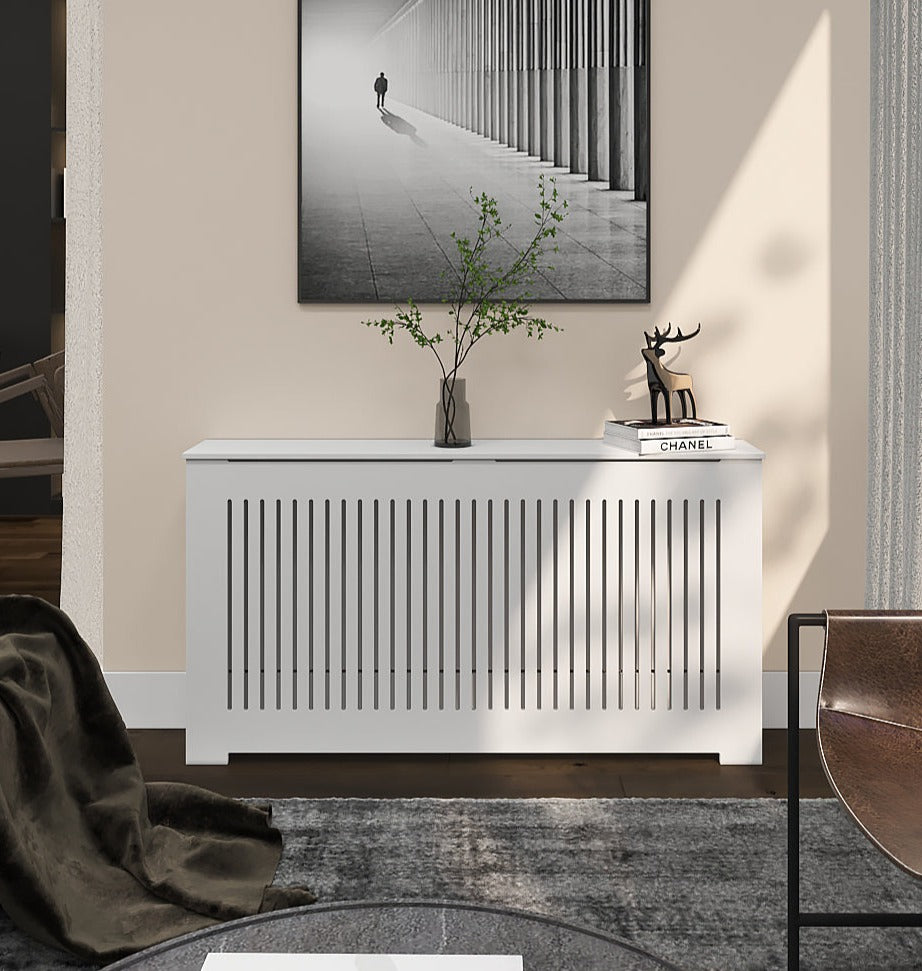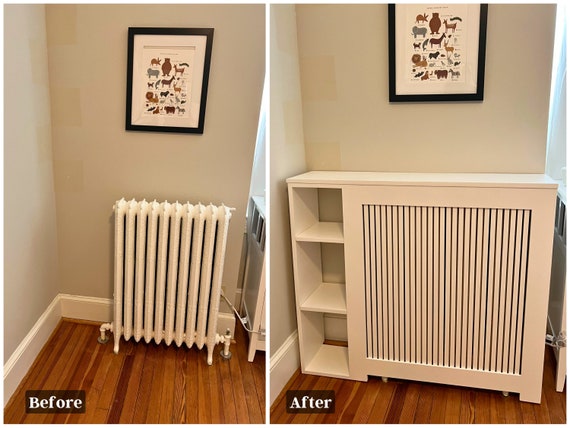The 20-Second Trick For Radiator Covers
Wiki Article
Facts About Radiator Covers Revealed
Table of ContentsNot known Incorrect Statements About Radiator Covers The 6-Second Trick For Radiator Covers4 Simple Techniques For Radiator CoversOur Radiator Covers PDFsRadiator Covers - The FactsSome Known Details About Radiator Covers
Over at the Old House Internet, Amy Hayden blogged about Five Advantages to Making Use Of Radiator Covers. This has begun a little bit of a debate: Are rad covers beneficial or do they throw away energy? Hayden created, "Radiators are a good resource of heat, but they also occupy valuable square video ...They might be called radiators, yet they ought to probably be called convectors, considering that the mass of the warmth that we obtain from a conventional rad is moved by convection. In convection, air warmed in between the fins of the radiator climbs to the ceiling and is intimidated the area in a circle.
The smart Trick of Radiator Covers That Nobody is Talking About
Hayden created, "Radiator covers with the proper support can distribute warmth a lot more efficiently than an uncovered radiator. Instead of the warm going straight to the ceiling, the back allows it to be pressed into the space." Lloyd Alter It is true that radiators need to have an appropriate reflective support; I use foil-faced bubble cover insulation; it shows a little of the radiated heat that would certainly have been taken in by the wall surface back right into the space and the radiator.Radiator covers can be valuable in older structures developed after the influenza epidemic of 1918 - radiator covers. After that, as is the instance now, health and wellness authorities believed that fresh air was the means to avoid obtaining illness and that people ought to rest with open home windows. Dan Holohan composes in "The Lost Art of Vapor Home Heating" that in New York City City, the Board of Health and wellness got that home windows must remain open at all times, and the radiators were developed to keep buildings warm on the chilliest day of the year with the windows open
Not known Incorrect Statements About Radiator Covers
Some radiators, like copper finned modern-day rads, included integral covers, often with dampers to adjust the convection; they, like vapor rads, need covers due to the fact that they are as well hot to touch. But also for a conventional cast iron rad that a person finds in old homes, connected to a hydronic system, a cover isn't needed for safety and security., Holohan kept in mind that some radiators can get dangerously warm. He defined a legal action where a kid rolled off the bed and obtained stuck between the radiator and the bed and endured severe burns.
As a typical home heating appliance, radiators are not there just to look pretty but to keep your home warm utilizing all-natural convection. With more focus on indoor layout, these devices can prove unattractive and sidetrack from the rest of the carefully plotted looks of a room. To align a radiator to the style of the remainder of your room, you can cover one up though this does include effects for the home heating.
A radiator cover is basically a means of concealing a radiator to obscure it from sight. They usually come in 2 materials, timber and galvanised metal. Timber is considered one of the most common material for a radiator cover as it just looks better. This Web Site is despite the fact that timber is not a wonderful conductor of heat but it is great for childproofing so is suitable for a young family.
A Biased View of Radiator Covers

Not only can they childproof the appliance and add a cosmetically pleasing layout, yet a radiator cover can additionally add added storage room, specifically in the bathroom. With a flat surface area, you need to have the ability to keep soaps and fragrances to maintain them within easy reach. By repurposing the room, the radiator cover can come to be a makeshift mantelpiece.
That is definitely the situation with radiator covers and they can restrict the efficiency of your main furnace. By interrupting the circulation of cozy air and the natural convection, you can endure warmth loss and reach for the thermostat when you actually ought to not have to. Effectively, a radiator cover can cost you money by exceedingly investing on home heating you are not taking pleasure in.
A Biased View of Radiator Covers
These include hemorrhaging the radiators, using reflective backing, and preserving a space for the radiator. A lot wikipedia reference of homes need to be bleeding their radiators at the very least as soon as a year. The job assists to eliminate any kind of trapped air which might be preventing the warm water from obtaining around the appliance. It additionally only takes a min or so to hemorrhage a radiator and is a sure-fire way to improve its effectiveness.Radiators work by all-natural convection, as chilly air sinks to the base of the wall surface, it enters into contact with the radiator after that heats up and climbs as the air ends up being less thick. The warm air effectively warms up a space. Nevertheless, if you were to put things alongside the radiator, such as a sofa, or border one with a radiator cover, after that this would certainly disrupt the natural convection and you would not be able to feel the full benefits of the heating.
Radiator covers might be a good alternative if you have children running about and require a means of stopping them from melting themselves on the warm surface. While a cover must look great to conceal a radiator, any type of material that obstructs a home heating device will certainly decrease its effectiveness. To provide a full style, the radiator cover need to go over the valves, in addition to the heater and pipelines.
Some Known Incorrect Statements About Radiator Covers

Which my concern: just how do I deal with identifying if my radiators should have covers? I have a close friend who believes the issue is basic: a cover traps the heat, so eliminating the cover will enable the warm to better enter the area and will make the radiator more reliable.
Which my concern: how do I set about identifying if my radiators should have covers? I have a good friend Home Page who believes the concern is easy: a cover catches the heat, so removing the cover will certainly allow the warm to better enter the area and will make the radiator more effective.
And thats my question: just how do I go around finding out if my radiators should have covers? I have a friend who thinks the issue is easy: a cover catches the warm, so removing the cover will certainly allow the warm to much better enter the space and will certainly make the radiator extra efficient.
Report this wiki page